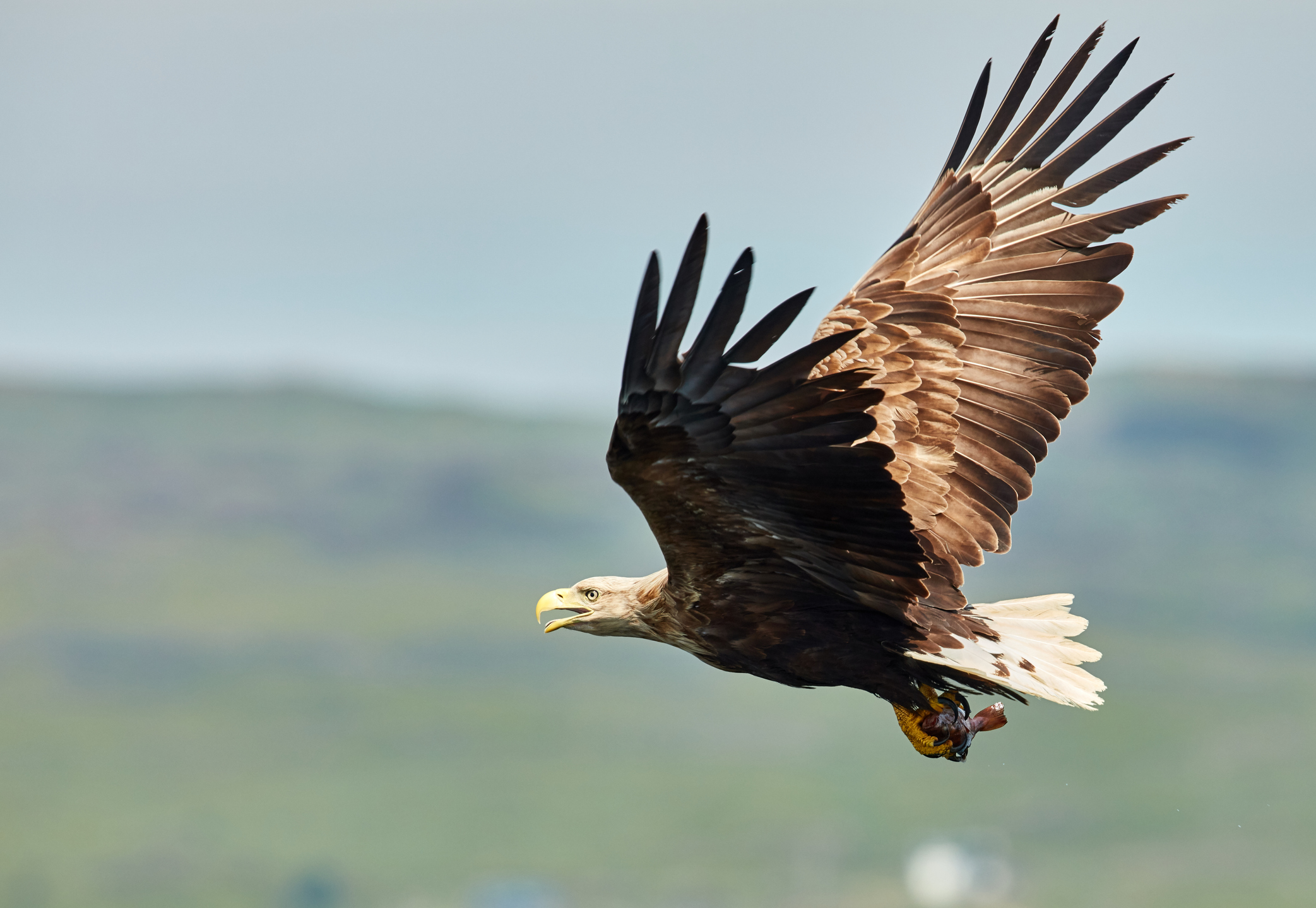Four white-tailed eagle chicks were released into the wild at Killarney National Park, Co. Kerry during the summer.
They are part of a National Parks and Wildlife Service programme that aims to bring this once-extinct bird back to Ireland. The programme began in 2007, with chicks brought from Norway and cared for until they were ready to be released.
These eagles are birds of prey that help protect biodiversity by feeding on fish, waterbirds and carrion. Extinct in Ireland since the 19th century, they now nest and breed across the country, including Cork and Donegal.
The release was attended by Tánaiste Micheál Martin and Minister Malcolm Noonan, who praised the programme's success in reintroducing this important species.
The chicks are monitored with satellite tags to track their movements and ensure their safety from threats like disease and poisoning.
The eagles find a perfect home in Killarney's tall trees and lakes, which provide plenty of food and safety.
Carrion Carrion is the dead body of an animal. Some animals, like birds of prey, eat carrion as their food. These animals help clean up the environment by eating dead things, which also helps stop the spread of diseases. |
 9 COOL FACTS ABOUT WHITE-TAILED EAGLES
9 COOL FACTS ABOUT WHITE-TAILED EAGLES

- Largest Bird of Prey in Europe: White-tailed eagles are the largest bird of prey in Europe, with a wingspan of up to 2.5 metres (8 feet).
|
- Appearance: Adult white-tailed eagles have broad wings, a white tail, and a large, powerful yellow beak. Their plumage is mostly brown.
|
- Diet: These eagles are opportunistic hunters, feeding mainly on fish, but also on birds (like waterfowl), mammals, and carrion (dead animals).
|
- Historical Range: White-tailed eagles were once common across Europe but were driven to extinction in several countries, including Ireland and Scotland, by the early 20th century due to hunting and habitat loss.
|
- Conservation Status: Thanks to reintroduction programmes, their populations have recovered in many regions. They are listed as "Least Concern" by the IUCN, but they are protected under various national and international laws.
|
- Lifespan: In the wild, white-tailed eagles can live for 20-25 years, though some individuals in captivity have been known to live longer.
|
- Breeding: White-tailed eagles usually mate for life and return to the same nest each year, adding to it over time. Their nests, often built in tall trees or cliffs, can be enormous and weigh up to 1 tonne.
|
- Reintroduction Success: In Ireland and Scotland, white-tailed eagle reintroduction projects, using chicks brought from Norway, have been highly successful. They now breed regularly in both countries.
|
- Migration: Juvenile white-tailed eagles may travel long distances after leaving the nest, but adults are largely sedentary, staying within their territory year-round.
|
DID YOU KNOW?
A creature can be considered extinct in one country but still exist elsewhere in the world. This is often referred to as ‘extirpation’. To read more on this, click here.